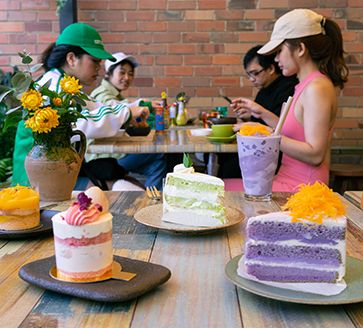I wrote a love letter to the city for Broadsheet during COVID-19 lockdown, but this should serve as a more practical, complementary introduction to the city. If nothing else, it will help you get your bearings.
Melbourne can be split into north and south, divided by the Yarra River (it’s filthy, but we still love it); east and west; and the CBD. Dipping into cliche, you can generalise as follows. The inner north is home to many of Melbourne’s best restaurants and cafes. It’s a formerly grungy locale that’s past the point of gentrification but still has a little grime around the edges. We like to think of it as character.
The south is a little more upper class. It’s where you’d live if you moved down from Sydney, wanted to be close to our Botanical Gardens, St Kilda, the beach or Melbourne’s wealthier suburbs. There’s a friendly war between north and south Melbourne, and the battle uniform varies: a mix of black skinny jeans, beanies and second-hand vintage finds in the north versus Lulu Lemon leggings and designer dresses in the south.
More than half of people in Melbourne’s western suburbs have both parents born overseas. This is compared to around a third in the eastern suburbs. Whole worlds exist within Melbourne when you cross the Bolte or Westgate Bridge. The diversity kicked off with Europeans migrating here following the Second World War, namely from Italy and Greece, but also Poland, Germany, Malta and what was Yugoslavia. In the ‘80s people from China, the Middle East and Central and South America began to call Melbourne’s western suburbs home, while more recently there’s been a thriving African community.
In Melbourne’s inner east, housing prices are more expensive, in large part thanks to the area’s private schools. The kids who grew up here tend to move out of home to Melbourne’s inner south or north. Push on a little further east and there’s a flourishing Asian community, majority Chinese, and some of Melbourne’s best food. Head out even further to Dandenong and there are pockets of people with ancestry from Afghanistan, India, Sri Lanka, Pakistan and Albania – all with the restaurants to prove it.
Our CBD is small in global terms, with a little of everything from the trendy restaurants of Flinders Lane to the tradition-laden Little Bourke Street, our Chinatown. In between there are secret hot-pot restaurants up staircases, Thai boat noodles hidden in car parks, Spanish bars flanking graffiti’d laneways and more. None of this is hard and fast; Melbourne’s diverse citizens live all over the city. From a culinary perspective you never know what cuisine you might find around the next corner, and that’s the beauty of it. Melbourne is the world on a plate in a single, liveable city. We’re also pretty good at making things our own, whether a flat white and smashed avocado, a dumpling filled with barramundi or curry-spiked with Vegemite.
I feel privileged to live in a city where every meal brings a sense of adventure and an opportunity to learn more about someone else. Melbourne is the kind of city you need to live in to understand and truly appreciate. If you’re visiting research is essential, or better yet, find a local to be your tour guide. Once you get under Melbourne’s skin, it will get under yours.
I’ve lived here my whole life and will never tire of it. There’s simply too much to eat.

















